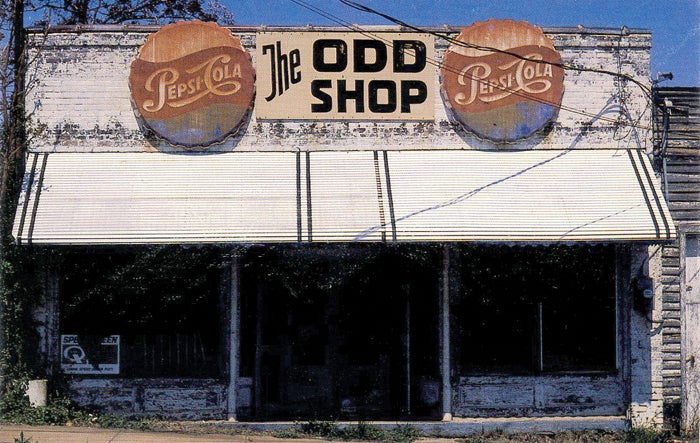Clyde: No do-overs in real life
Published 12:00 am Tuesday, February 2, 2021

- This photo, which appeared on a postcard, shows The Odd Shop, a store run by Betty Brown.
By Clyde
If you had it to do over again, what would you do differently?
Read Psalm 130 aloud: “Out of the depths have I cried unto thee, O Lord.” From this past year and the winter of our discontent, have we come out better off? Would you have chosen another road, a different life partner, moved to a new town or country, started a new business, voted a different way or maybe would have just worn a mask sooner?
Years come and go, but our every day places stay the same unless, it seems, dissenters mess things up. Pro, Latin for “forth,” and testari, Latin for “witness,” make us choose sides. Protestants remind us of our beliefs as a testimony. Today’s protesters seldom are in favor of anything and seldom are happy with the results.
The 1770 Act of Regulating the Town proclaimed our small village “a healthy, pleasant situation, well-watered and convenient for land trade.” McCay’s millpond was the cause of death for many of Mr. Frohock’s slaves each year of the fever from the deadly miasma. It was drained for Millford Hills.
The point near the public square at James Carter’s corner was the site of the second courthouse in front of R.J. Holmes’ store. It met for the first time in 1756 in a weather-boarded, 30-by-20-foot building raised 2 feet off the ground in the intersection of Corbin and Innes streets. Park your wagon anywhere.
The Square, with the mansion house and too many saloons was the place to do business. By 1896, a fountain and fence had been added and court was held in the Rowan Museum building, where you can still see the gate from the well. There, rumor was, an alligator was once seen. Streetcars made the fountain re-move to Chestnut Hill in 1905. No protests. Maybe its return could bring back shoppers to the streetscape plan for this one-horse town.
After “The Wawr,” why could the five ladies have chosen any other place for their monument to honor 3,500 war dead from Rowan County than that tract — 20 feet by 35 feet — at “Inniss” and Church streets “perpetually” promised to them by the city fathers and “it’s successors from generation to generation”? Now, some streets even want to add medians and bikes lanes to slow down traffic.
The town with wide streets flourished, and in 1879 Theo Buerbaum’s bookstore had items just arrived from Germany for Christmas: selected lines of stationery, blank books, elegant fancy goods and toilet articles, china, queensware, crystal, Bohemian ware, wallpaper, pictures, oil paintings, crono lithographs, picture frames, small musical instruments, toys for the little folks, domestic and foreign fruit and confectionaries. We had come a long way on dirt streets with with no Amazon. Let’s go shopping!
By 1949, “jot-em-down” stores like the Odd Shop, pictured in the image that accompanies this column, run by Betty Brown may have been your ticket. There were paper pokes, if you needed one, held notions at Blue Star Sales and Eric Goodman’s at 119 and 122 East Council and Green’s Place on North Salisbury Extension.
On the other side of Spencer, Joe Green’s septic tank business had a motto of “Nobody puts their nose in my business.” Later on, Easy Ed ran a junk store at Pleasant Village. “This and That” was on North Long Street.
Stores change their names, move around the corner, merge with partners and some go out of business. As Jethro Rumple noted in his history, “It is to be regretted that there is a propensity to change the names of places as time moves on.” Nothing has changed.
Alas, some things tend to survive no matter what we do. Let’s hope this pandemic for all people gives us a panoramic view and it soon passes before it pushes an otherwise pleasant place with pestiferous people into the perils of pandemonium while waiting in lines for a panacea.
You can change a painting: add color, erase, re-work it or event start all over. But in reality? Sorry, no do-overs.
Clyde lives in Salisbury.

